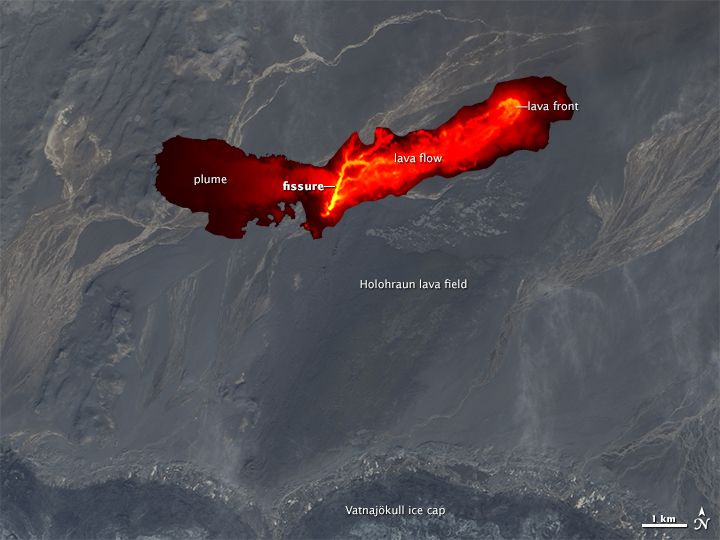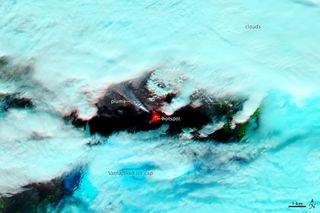See Iceland's Spectacular Eruption From Space (Photo)

When glowing lava peeked through a gap in the clouds above Iceland this week, NASA satellites finally caught a sky-high view of the fiery eruption.
Iceland's spectacular lava fountains, spewing from a long fissure northeast of Bardarbunga volcano, have been monitored hour-by-hour by a horde of excited scientists. The public is watching too, by live webcam and through photographers and journalists brought in by car, plane and helicopter.
But satellite coverage has been sparse since the eruption started Aug. 28. Only a few satellites orbit the high latitudes, and inclement weather has hidden the lava field from their electronic eyes, according to NASA's Earth Observatory.
On Sept. 1, the Advanced Land Imager on NASA's Earth Observing-1 satellite captured a night view of the eruption. The image seen here combines infrared and natural light to highlight the hot lava flow against the cold black sediment covering the 200-year-old Holuhraun lava field. [Gallery: Beautiful Images of Bardarbunga's Volcanic Eruption]
And on Aug. 31, the MODIS instrument on NASA's Aqua satellite pinpointed the volcanic eruption and its steamy plume of poisonous sulfuric gas. The image also picks up the glacial ice threatened by the eruption.

The volcanic unrest began Aug. 16, when thousands of small earthquakes underneath the Bardarbunga volcano heralded the arrival of new molten rock. But the magma headed northeast, forming a long channel called a dike. The magma erupted on Aug. 28 north of Dyngjujokull glacier, between Bardarbunga volcano and Askja volcano. The basalt lava now covers 4.2 square miles (11 square kilometers), according to the Icelandic Met Office.
Earthquakes continue to rock Bardarbunga volcano, with a magnitude-5.5 recorded on Wednesday (Sept. 3). Small tremors also rattled the area around the ongoing eruption on Wednesday, causing officials to order a temporary evacuation in case of a sudden volcanic blast.
Sign up for the Live Science daily newsletter now
Get the world’s most fascinating discoveries delivered straight to your inbox.
Email Becky Oskin or follow her @beckyoskin. Follow us @livescience, Facebook & Google+. Original article on Live Science.












